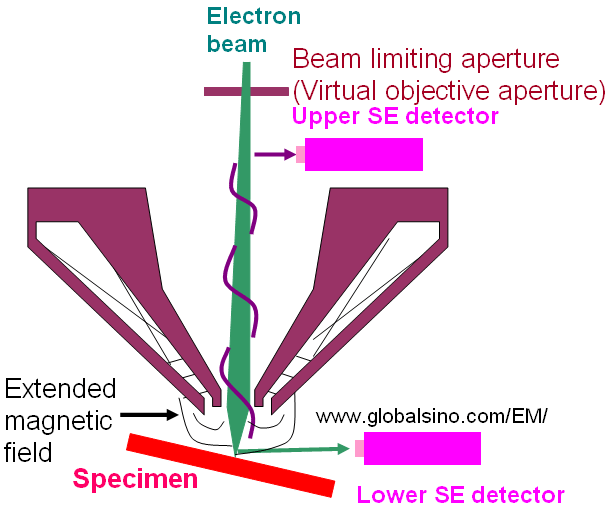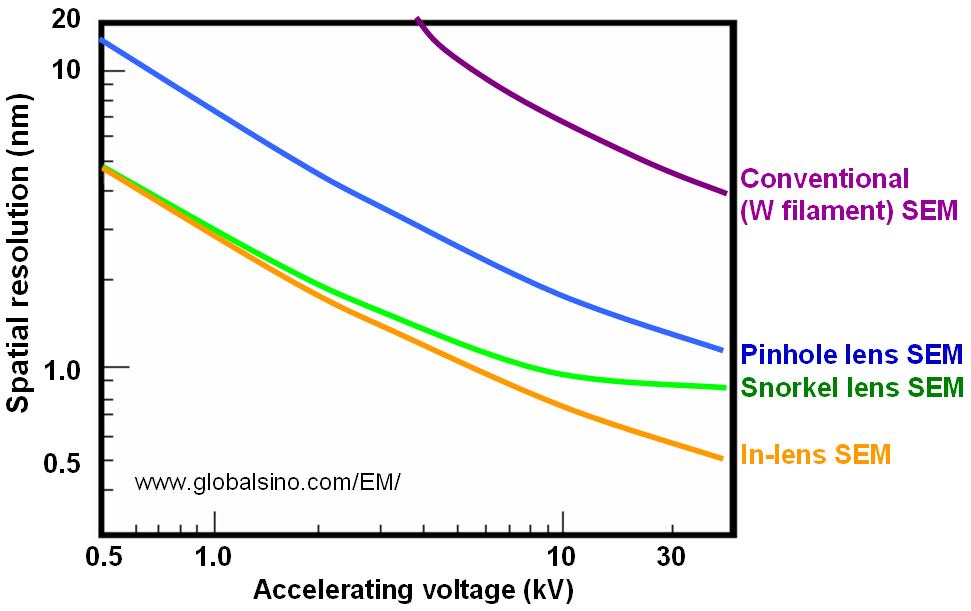=================================================================================
As shown in Figure 3593a, the single-pole snorkel objective lens produces a strong magnetic field that extends from the polepiece directly to the SEM specimen. This type of lenses is a compromise between the aberrations of immersion lens and pinhole lens but accommodate large specimens similar to those in the pinhole lens SEMs. In addition, this configuration can simultaneously accommodate both a conventional (or called lower, e.g. Everhart-Thornley (ET) detector ) and a through-the-lens (or called upper) secondary electron (SE) detectors, providing valuable flexibility for imaging.

Figure 3593a. Single-pole snorkel objective lens.
Virtual objective apertures (VOAs) are required for the immersion and the snorkel lenses and they stay further from the specimen chamber and thus are clean.
Figure 3593b shows the schematic illustration of spatial resolutions of SEMs with various lenses, including conventional W (tungsten) filament SEMs, pinhole lens, snorkel lens, and in-lens. The best resolution can be obtained by in-lens SEMs.
 |
|
Figure 3593b. Schematic illustration of spatial resolutions of SEMs with various lenses. |
|

